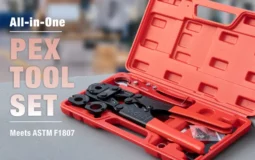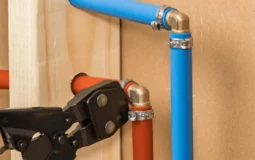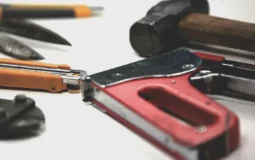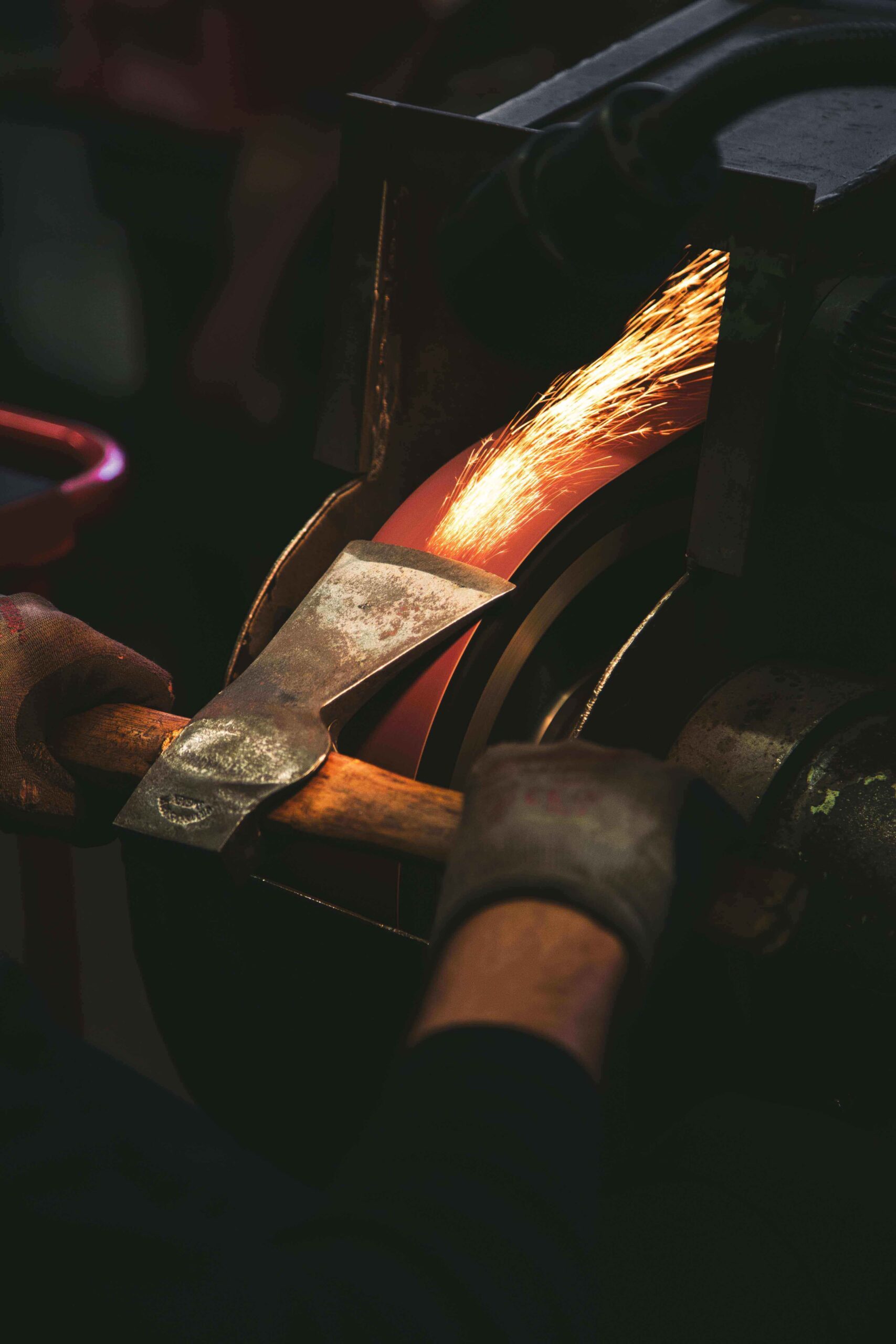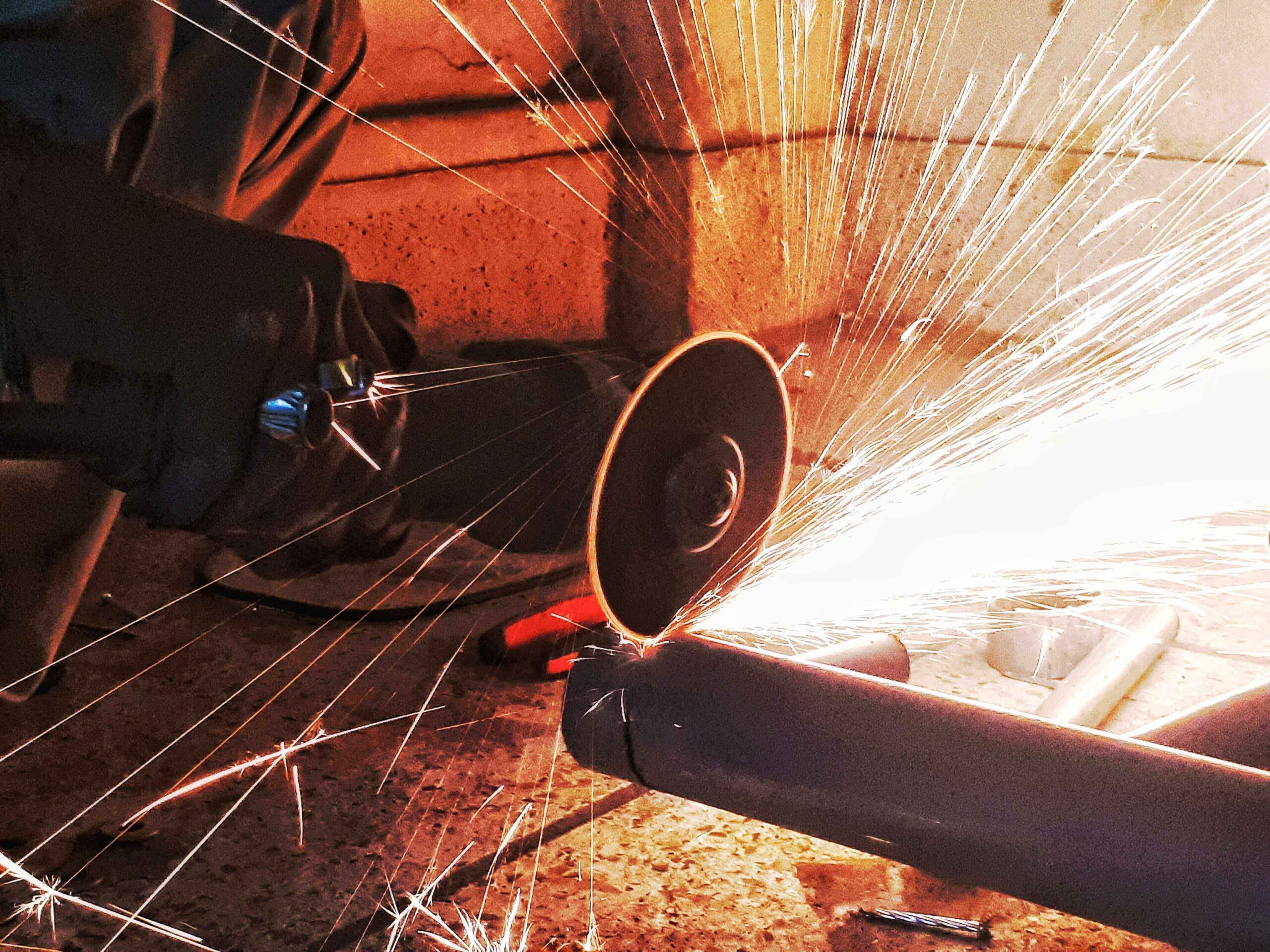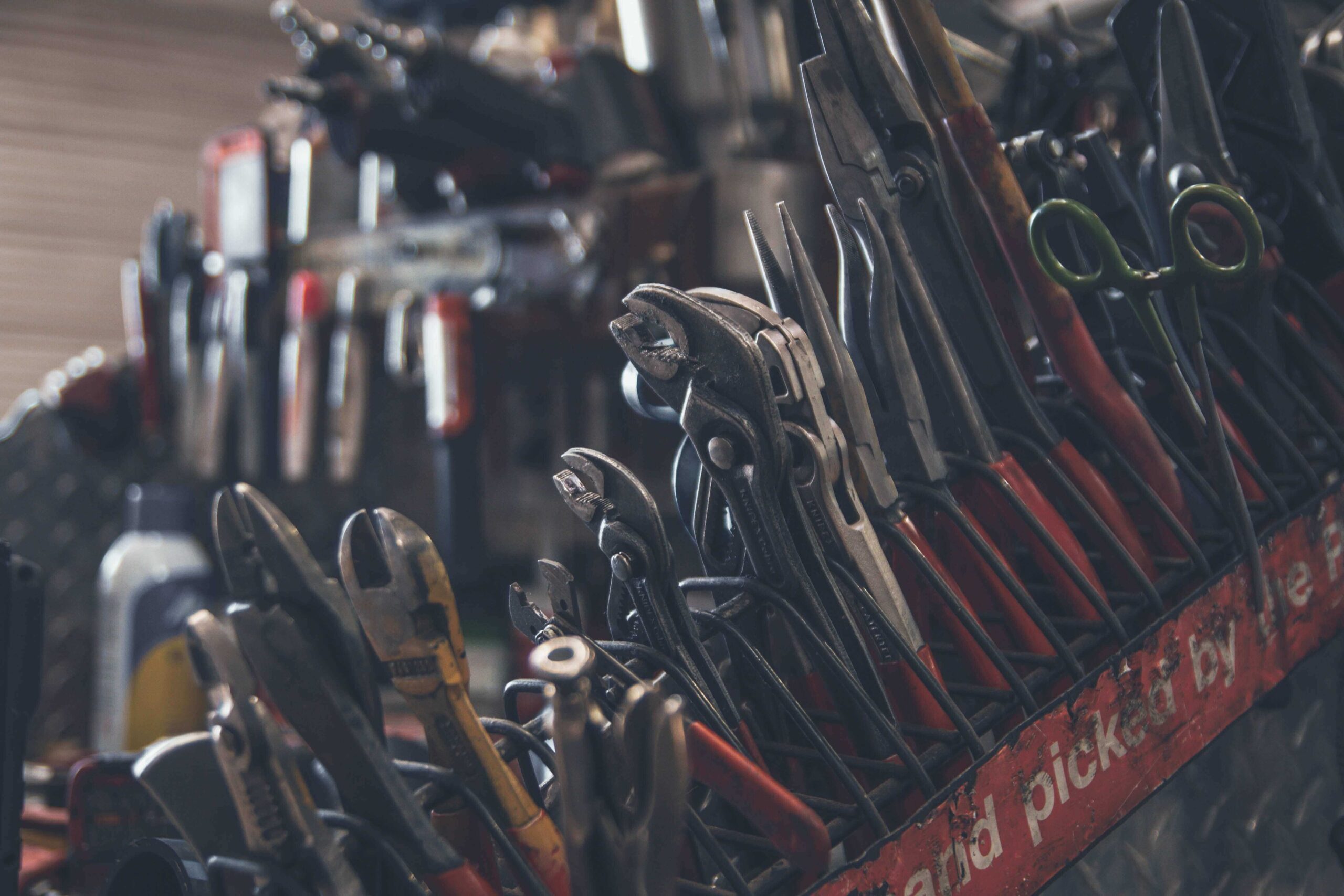We’re really surprised to find out that many people underestimate the importance of a corner clamp (90-degree clamp). Many inexperienced woodworkers even think they can work without it and can achieve the same results.
But the truth is that with one of the best corner clamps, you can see a day-and-night difference.
Unlike simpler tools like pliers or hammer, woodworking corner clamps are more versatile. You can use it to hold almost everything you need – as long as they fit into the claws – to glue or screw them together.
Let’s find out more about corner clamps, how many styles there are, and what we can do with them.
Best Corner Clamps On The Market Right Now
Overview
Can-Do Clamp - Top Pick
Simplicity is what mainly sets this corner clamp from MLCS apart from other products. Most users seek this feature when they buy the Can-Do clamp as it helps reduce fatigue when doing any simple repair or other woodworking tasks.
Both the right and left areas of the clamps are flat and parallel, which means that the pieces you’re working on will automatically flush up by themselves. It’s not stiff and fixed when you tighten, making a useful wiggle room.
The maximum thickness for T-joints and miter is 2.75 inches, while that of the pass-through stock is 1.5 inches.
The Can-Do corner clamp is made from heavy, durable aluminum with good-quality threads. Together, they create good gripping, holding wood pieces firmly in place.
On top of that, the corners are open, which means glue dripping down the joint can’t mess things up.
You can wall-mount or bench mount it when you need a semi-permanent solution. It also comes with a T-handle, allowing you to adjust the clamp with extra power.
But this handle also means you don’t have any rubber cover, which is not always great for everyone. And sometimes the Can-Do clamp can leave some red marks behind on the wood. This issue won’t go away easily unless MLCS improves the quality of the painting.
The price of the Can-Do clamp is a little higher than an average product, but all things considered, the convenience and reliability it brings are well worth the cost for this best right-angle camp.
Pros.
- Straightforward to use
- T-handle
- Multifunctional
- Many mounting options
- Sturdy frame
Cons.
- Expensive
- No rubber handle
- Sometimes creates marks on the wood
Housolution Right Angle Clamp - Runner-Up
This model from Housolution is a solid alternative to the Can-Do clamp above.
Made from die-cast aluminum, it’s durable and weighs only 1.8 pounds – surprisingly low weight for a corner clamp. The maximum opening is 2.86 inches, while the jaw has a width of 3.74 inches. You can find it in various color options such as orange, red, black, gray, etc.
This Housolution right angle clamp features a floating head design with the swing jaw. This adjustable swing style allows you to fix two wood pieces that have different thicknesses together with ease. With the rubberized handle, you can make adjustments easily for this task.
More specifically, it’s made from TPR (thermoplastic rubber). That’s why it won’t slip even when your hand is wet – a huge difference for people with sweaty hands.
But this also means you can benefit from the extra power of a T-handle, especially when you need to use this corner clamp over a workbench.
And like the Can-Do corner clamp, this Housolution is still slightly more expensive. It’s not a big deal when you need a single clamp, but when you need many of them to join your cabinet or drawer, the difference might be significant for some people.
Pros.
- Heavy-duty construction
- Lightweight
- Can hold pieces with different thicknesses with the adjustable swing jaw design
- Comfy rubberized handle
- Many color options
Cons.
- Expensive
- No V-groove or T-handle
- No quick-release mechanism
Bessey Tools WS-3+2K - Best Value
Bessey has always been one of the biggest names in the woodworking tool industry. It has produced amazing tools such as bar clamps and parallel clamps, and the WS-3+2K – its corner variant – is also an impressive product.
The die-cast aluminum construction features a plastic covering in order to prevent itself from marring your delicate workpieces.
The clamp head and pivoting screw can adjust themselves automatically to wood with different sizes. This is one of the greatest things about this Bessey angle clamp since you can focus more on keeping the workpieces squared up correctly.
Like the parallel clamps from Bessey, it uses the single handle design for adjustment.
We find that you can actually yield a lot of clamping force with this woodworking clamp. Bessey also includes TK6 table clamps in the box in case you need to mount your clamp securely to a workbench.
And guess what? It’s well-priced compared to the models we have listed above. The Bessey Tools WS-3+2K is the best choice for woodworkers that need multiple reliable corner clamps at the same time.
But many users have found that this corner clamp is not great for mitered joints or one-handed usage.
Pros.
- Well-priced
- Sturdy
- Comfortable
- Include and plastic insert and TK6 table clamps
Cons.
- Heavy
- Not great for mitered joints
- Not easy to use one-handed
Horusdy Corner Clamp - Best Cheap Model
Despite its low price, the Horusdy corner clamp offers a lot of ergonomic features.
It has a soft non-skid rubber handle so you can hold it comfortably. And this handle is attached to a rust-proof spindle screw, which you can use to retract to push the jaws.
Because of the single-handle design, there are two swivel points on this Horusdy model that allow the head of the clamp to float. This means you can use it with two workpieces of different widths. And if you prefer a T-handle design instead, check out the Horusdy Quick-Jaw Right Angle.
You can operate this aluminum-alloy corner clamp effortlessly: just put the woodblocks in, then tighten them by turning the screw. It even comes with a quick-release mechanism! You don’t need to unscrew this clamp tediously once you’re done.
Similar to other more expensive models, the body is made from die-cast aluminum, making it fairly sturdy and abrasion-resistant.
The best part about the Horusdy corner clamp is that it’s significantly cheaper than other models we have mentioned. This really matters when you need a lot of them in multiple corners.
It seems that this product is so great, so what is the catch?
Well, many users have said that the quick-release mechanism is not reliable and sometimes even fails, making it difficult to tighten the workpieces. And Horusdy also doesn’t equip any V-grooves, so holding round objects is also out of the question.
Pros.
- Cheap
- Sturdy construction
- Ergonomic handle
- Quick-release mechanism included
- Floating head design allows for clamping wood blocks having different widths
- Non-skid rubber handle
Cons.
- No V-grooves
- No locking feature on the quick-release mechanism
Weichuan Corner Clamp - The Most Overlooked
If you aren’t really satisfied with the popular models above and don’t mind giving a less well-known brand a try, this corner clamp from Weichuan is our recommendation.
It also features a die-cast aluminum-alloy construction and works well with various materials, from wood, steel rod to thick glass and metal tube.
The single handle is rubberized to provide non-slip gripping, which you can use to open the jaw to 2.8 inches hassle-freely. The spindle screw also features electroplating coating to make it rust-proof.
But like any other corner clamp, it indeed has some issues of its own. While we find no rough edges, the faces are not entirely flat. The poorly-cut threads are hard to loosen or tighten while the metal seems too lightweight and thin.
And the Weichuan is not a great choice for big woodworking projects as well. It still can hold small workpieces (like a photo frame or frame box) firmly, but as the sides are pretty low, you may face some troubles with big woodblocks.
Pros.
- Versatile, work well for various materials
- Rubberized handle
- Rust-proof rotating spindle screw
Cons.
- Only suitable for small projects
How To Know Which Corner Clamp Is The Best For You
Jaw Capacity
The thing you should always check first on a 90-degree angle clamp is the clamping range. Manufacturers often give this number in inches or millimeters, which indicates the maximum clamping width when the jaws are fully open. It’s important since it determines the thickness of wood pieces you can fit in the clamp.
The general advice is it should depend on what you plan to work on. And if you’re still not sure about this, just look for a wide jaw opening (above 2.7 inches) so that you are not limited to small metal or wood pieces.
Materials
As you may see from the above models, most corner clamps these days are made from aluminum or an aluminum alloy. The main difference usually lies in the specific alloy or how it’s made. But there are also some models made from other metals like zinc.
There is a good reason manufacturers choose aluminum and its alloys to make corner clamps. They are lightweight yet strong enough for the tasks, so you can easily pick up the clamp and carry it to another workbench with ease.
What also matters are the frames and coatings, as they all can make the clamp more long-lasting.
The frames that have gone through the heat-treating process are very sturdy, while high-quality surface coatings are a great help in preventing corrosion. You can find information about the material in the specifications of the product.
Type of Handle
There are two handle designs in these hand tools: T-shaped handles and single/double handles.
The T design allows users to apply a higher torque, which in turn results in a higher clamping pressure. That’s why you can have a good grip easily with a T-handle.
But this style often provides no soft paddling like rubberized covering. It may make your hands uncomfortable or even hurt after holding the metal directly for a long time.
The single or double handles, on the other hand, are extremely comfortable to hold, but you may need more effort to squeeze the claws tightly.
Construction
Double-jaw and swing-jaw are the two designs of most corner clamps on the market.
A swing-jaw model is more compact – an ideal choice if you don’t have a lot of working space. But it also has a lot of moving parts, which affects the whole clamps when it comes to integrity and strength.
The double-design usually results in bigger clamps, but the construction is also more durable and stronger as a result.
FAQs
When do I need a corner clamp?
There are numerous tasks that you can get done with this tool.
The most popular reason for a corner clamp for woodworkers is probably to stabilize wood pieces. In other words, they are an obvious choice if you need a tool to support and hold things in place (picture frames, boxes, cabinets, etc.) before you can actually crave, polish, or join them together.
But there are also many creative applications that you might never think of. For example, when you want to let something dry in its right-angle shape, consider using your corner clamp. It can keep painting, for example, dry and flat with no wrinkles.
So how about what a corner clamp can't do?
Though corner clamps can hold wood pieces together, they can’t actually press them strongly against each other. You should use screws or glue instead.
Can I use a corner clamp for welding?
While many manufacturers claim that their products are good for welding, we don’t always recommend this. You should avoid doing so, especially when your clamp has many plastic parts, and find a welding clamp instead.
Can I adjust the angle of a corner clamp?
As the name suggests, corner clamps are intended only for 90-degree angles. Get an adjustable, multi-angle clamp if you plant to work with other angles.
Conclusion
Finding the best corner clamps for your work is always worth the effort. They can provide an accurate 90-degree angle, meaning you can create more high-quality works with precise joints.
The best way to do so is to figure out what kind of wood you need to work with first, then consider design, materials, or construction.
But if you’re new to woodworking and don’t know what you actually need, we recommend the Can-Do clamp, which has a durable construction and is comfortable to use.
See also:
